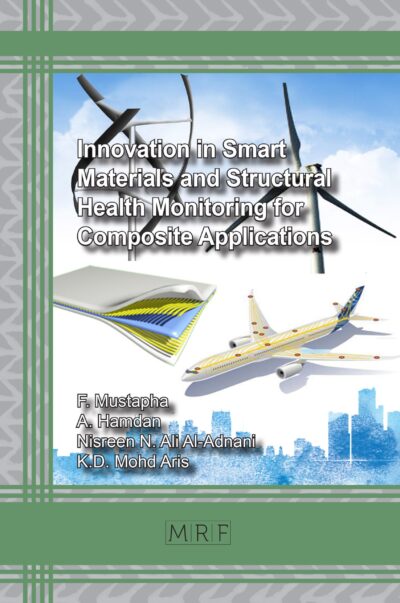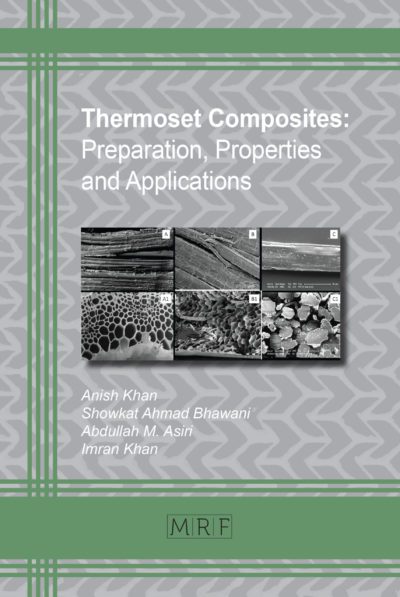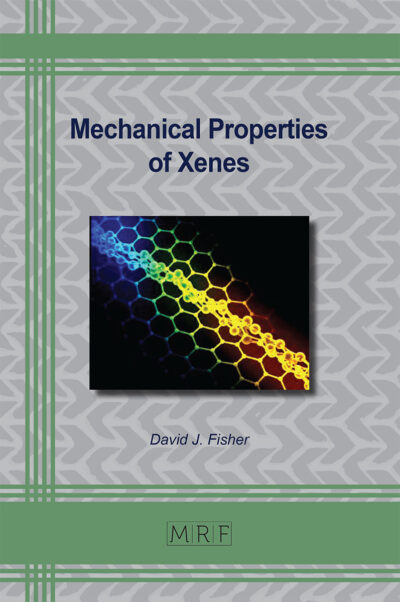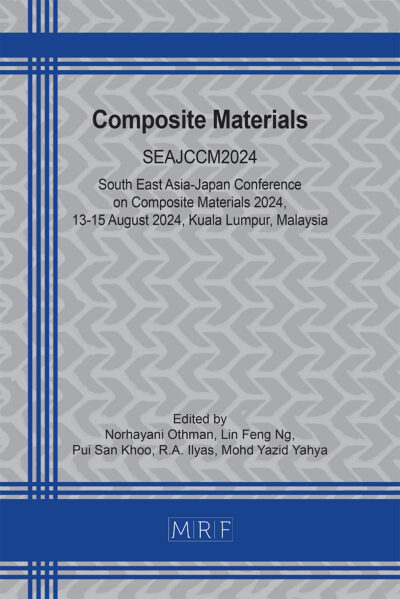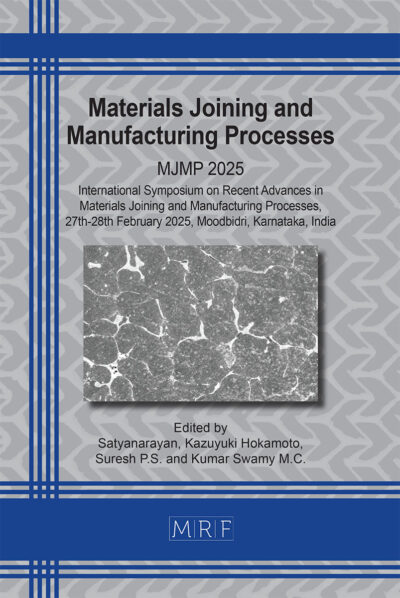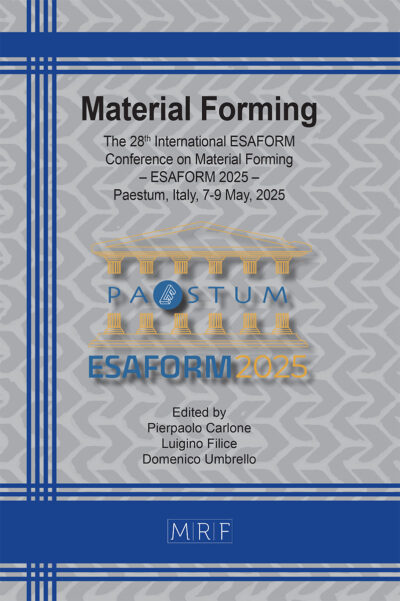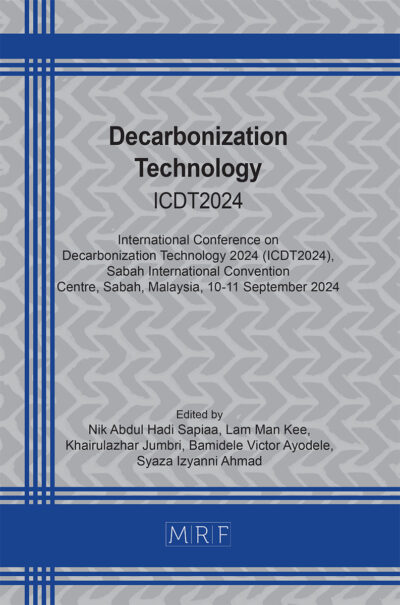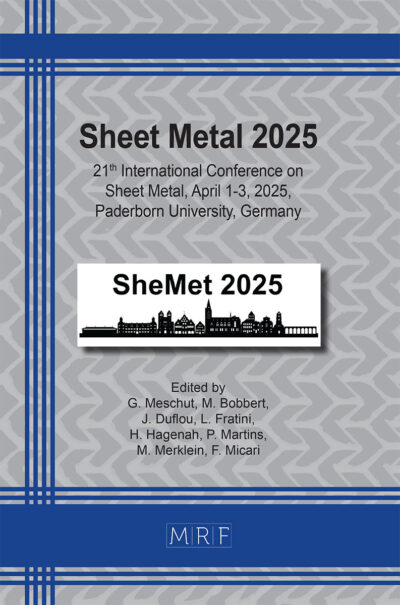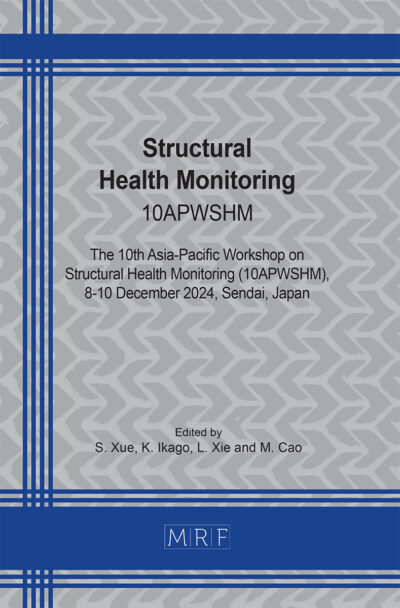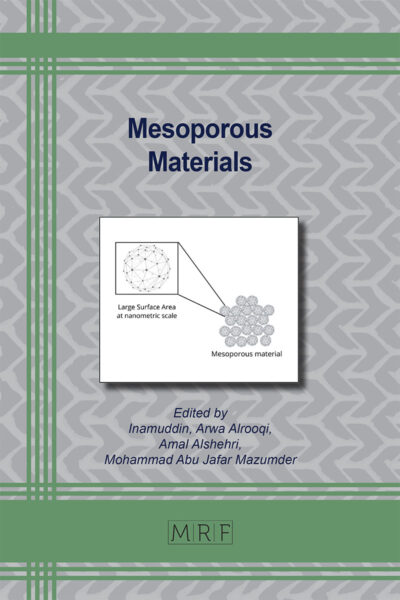3D multi-scale thermal modeling of AFP in-situ consolidation processes for thermoplastic composites using an Eulerian FEM approach
Bruno A. Storti, Adrien Le Reun, Steven Le Corre
Abstract. The Automated Fiber Placement (AFP) process has the potential to significantly reduce manufacturing times of composite materials through in-situ consolidation of thermoplastics (ISCT). Although ISCT can eliminate the need for post-consolidation in autoclaves, the process demands precise thermal management to rapidly heat the composite above the matrix melting point without causing material degradation. The challenge in numerically modeling this process arises from the high-power density emitted by the near-infrared laser diode, the deformed geometry of the silicon roller used for material consolidation, and the high deposition speeds, which can reach up to 1 m/s. Moreover, the process involves multi-scale features, such as micro-scale absorption of laser energy in the first fiber layers, and macro-scale effects associated with deposition velocity. In this work, we introduce a finite element framework based on a 3D Eulerian approach to simulate AFP manufacturing conditions. The numerical model at the macro scale is driven by a highly concentrated volumetric heat source, which is derived from solving radiative heat transfer equations at the microstructure level. Structured meshes, incorporating the deformed roller, the incoming tape, and the substrate, are used to maintain high mesh quality. The geometry of the deformed roller is obtained from a semi-analytical model available in literature, while its velocity field is derived from a CFD analysis. The model accounts for anisotropic properties arising from the difference between the transverse and longitudinal thermal conductivity of fibers, as well as temperature-dependent thermal properties. The results demonstrate that the model accurately predicts the surface temperature of the composite under various manufacturing conditions. Additionally, a parametric study conducted with varying roller velocities and laser intensities enabled the development of a heating law that can be implemented by the AFP machine to strive for proper consolidation while preventing material degradation during the process.
Keywords
Automated Fiber Placement, Finite Elements, Composites, Thermoplastics
Published online 5/7/2025, 10 pages
Copyright © 2025 by the author(s)
Published under license by Materials Research Forum LLC., Millersville PA, USA
Citation: Bruno A. Storti, Adrien Le Reun, Steven Le Corre, 3D multi-scale thermal modeling of AFP in-situ consolidation processes for thermoplastic composites using an Eulerian FEM approach, Materials Research Proceedings, Vol. 54, pp 618-627, 2025
DOI: https://doi.org/10.21741/9781644903599-67
The article was published as article 67 of the book Material Forming
![]() Content from this work may be used under the terms of the Creative Commons Attribution 3.0 license. Any further distribution of this work must maintain attribution to the author(s) and the title of the work, journal citation and DOI.
Content from this work may be used under the terms of the Creative Commons Attribution 3.0 license. Any further distribution of this work must maintain attribution to the author(s) and the title of the work, journal citation and DOI.
References
[1] V. Le Louët, Étude du comportement thermique de bandes composites pré-imprégnées au cours du procédé de fabrication AFP avec chauffage laser, Ph.D. thesis, Université de Nantes, 2018.
[2] O. Baho, G. Ausias, Y. Grohens, J. Féréc, Simulation of laser heating distribution for a thermoplastic composite: Effects of AFP head parameters, The International Journal of Advanced Manufacturing Technology 110 (2020) 2105-2117. https://doi.org/10.1007/s00170-020-05876-9
[3] B. W. Grimsley, R. J. Cano, T. B. Hudson, F. L. Palmieri, C. J. Wohl, R. I. Ledesma, et al., In-situ automated fiber placement of thermoplastic composites for high-rate aircraft manufacturing, in: SAMPE 2022 Conference and Exhibition, 2022.
[4] K. Mishra, From the determination of thermal properties of fibers to multiscale modeling of heat transfer in composite, Ph.D. thesis, Université de Nantes, 2019.
[5] A. Le Reun, V. Le Louët, S. Le Corre, V. Sobotka, Numerical simulation at the micro-scale for the heat transfer modelling in the thermoplastic composites laser-assisted AFP process, Composites Part A: Applied Science and Manufacturing 179 (2024) 108010. https://doi.org/10.1016/j.compositesa.2024.108010
[6] A. Le Reun, A. Lévy, H.-A. Cayzac, V. Sobotka, S. Le Corre, Carbon fibre PAEK prepreg micrograph analysis using WEKA deep learning methodology, in: 21st European Conference on Composite Materials (ECCM21), Vol. 8, 2024, pp. 531-537.
[7] B. A. Storti, A. Le Reun, S. Le Corre, Accurate 3D modeling of laser-matter interaction in the AFP process by a conductive-radiative FEM approach, Materials Research Proceedings 41 (2024). https://doi.org/10.21741/9781644903131-256
[8] B. A. Storti, A. Le Reun, S. Le Corre, Fiber-scale 3D RTE FEM simulation of laser-matter interaction in the automated fiber placement process for heating laws prediction, in: 21st European Conference on Composite Materials (ECCM21), 2024.
[9] M. Badri, P. Jolivet, B. Rousseau, S. Le Corre, H. Digonnet, Y. Favennec, Vectorial finite elements for solving the radiative transfer equation, Journal of Quantitative Spectroscopy and Radiative Transfer 212 (2018) 59-74. https://doi.org/10.1016/j.jqsrt.2018.03.024
[10] M. A. Badri, Efficient finite element strategies for solving the radiative transfer equation, Ph.D. thesis, Université de Nantes, 2018. https://doi.org/10.1016/j.jqsrt.2018.03.024
[11] J. Moothoo, Introducing a laser spot control and positioning method for Laser-assisted AFP. Application to the determination of the heating law of a thermoplastic carbon fibre prepreg, in: 21st European Conference on Composite Materials (ECCM21), 2024.
[12] A. Ribes, C. Caremoli, Salome platform component model for numerical simulation, in: 31st Annual International Computer Software and Applications Conference (COMPSAC 2007), Vol. 2, IEEE, 2007, pp. 553-564. https://doi.org/10.1109/COMPSAC.2007.185



